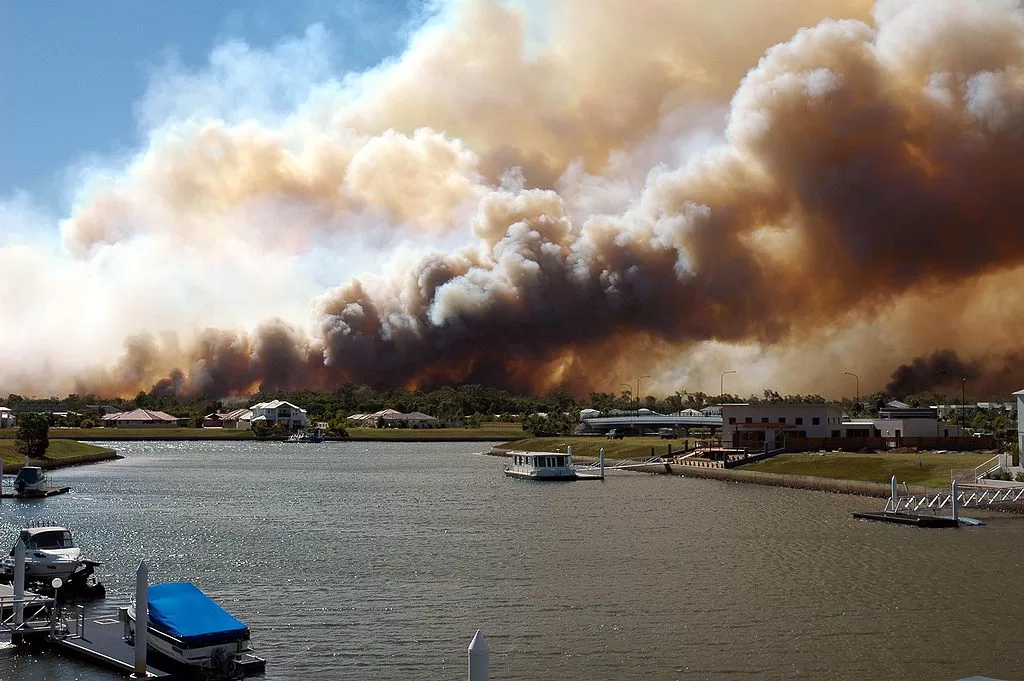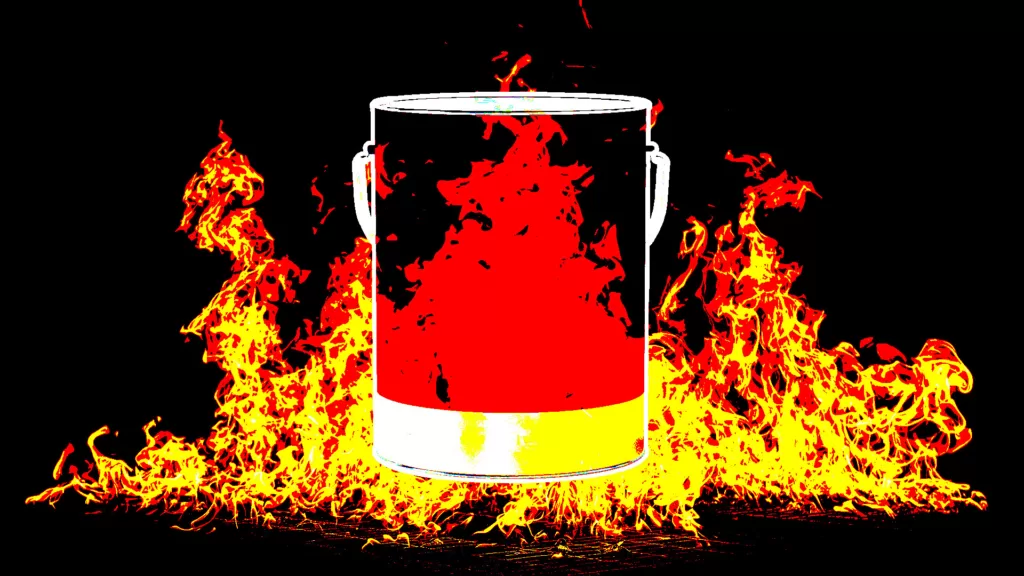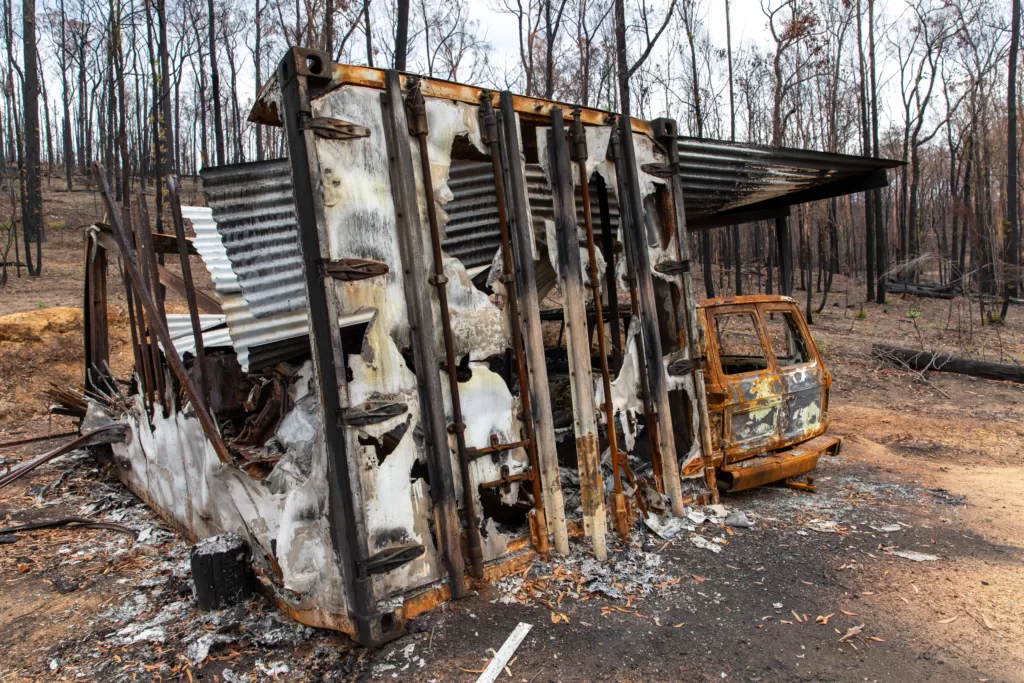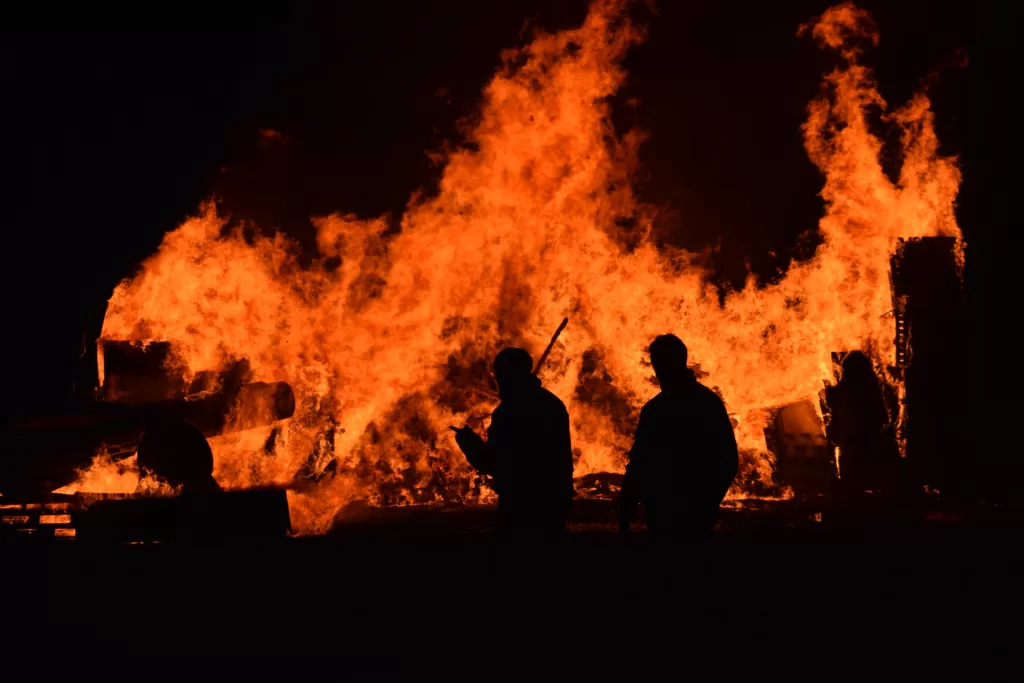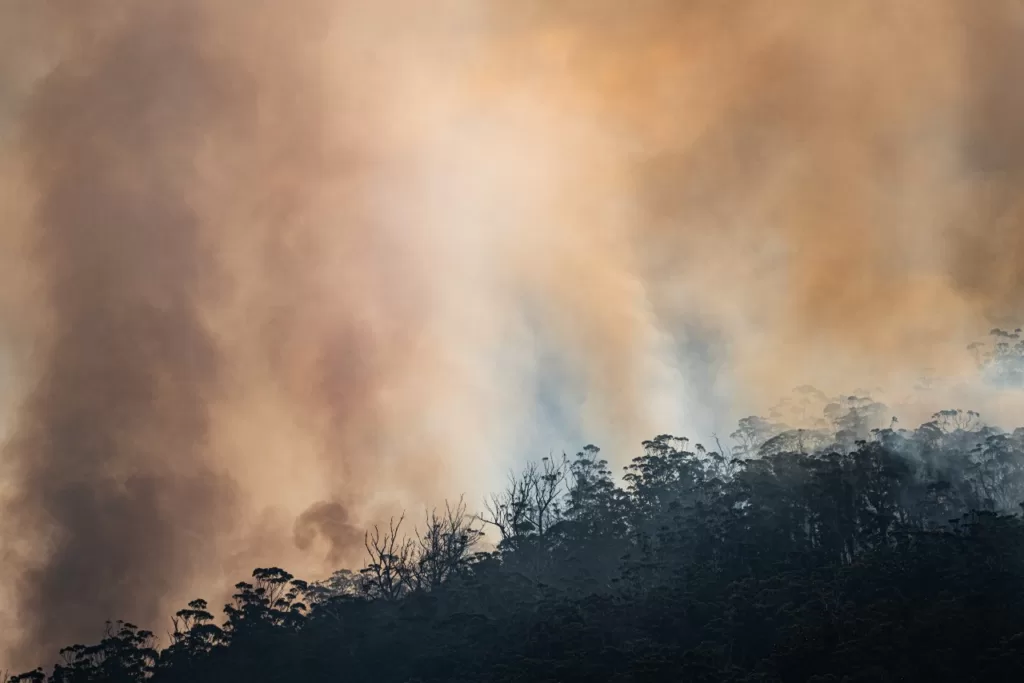Our sports heroes often use ice vests, slushies and misting fans to keep their cool during the heat of battle. Firefighters should have access to the same gear.
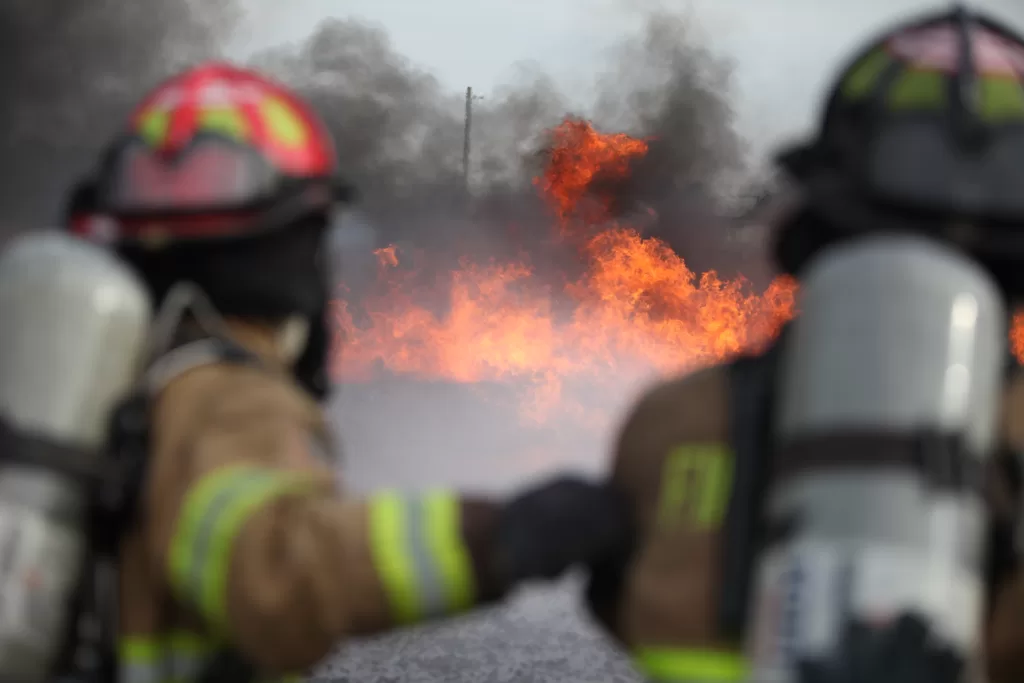 Firefighters can experience flame temperatures of up to 1,100 degrees Celsius while battling a blaze. : Flickr: Edward N. Johnson, USAG-Humphreys, PAO CC BY 2.0
Firefighters can experience flame temperatures of up to 1,100 degrees Celsius while battling a blaze. : Flickr: Edward N. Johnson, USAG-Humphreys, PAO CC BY 2.0
Our sports heroes often use ice vests, slushies and misting fans to keep their cool during the heat of battle. Firefighters should have access to the same gear.
As you’re relaxing over the Christmas holidays, don’t forget our brave and resilient firefighters.
While most of the country is getting ready to head to the beach to enjoy a summer break, many fireys will be risking their lives battling the blazes that will inevitably break out.
It’s only the start of what promises to be a hot and dry Australian summer, with a heightened risk of bushfires thanks to El Niño.
But already there are news reports of firefighters being injured due to heat stroke suffered while they were battling fires in Perth in November.
Together with dealing with flame temperatures which can reach 1,100 degrees Celsius, on the job firefighters perform a number of demanding physical tasks while wearing protective clothing and gear, which results in extreme physical and psychological fatigue.
These conditions cause their body core temperatures to rise, which compromises their work output, blood pressure regulation, and can lead to heat illnesses.
Three-quarters of firefighters experience heat-related illness symptoms while on the job, such as headaches, sudden muscle cramps, dizziness, nausea, and fainting.
Heat stress also results in poorer cognitive functioning and decision-making, which further increases the risk of death.
Put simply, when the going gets tough, firefighting is an incredibly hot, physical and stressful job — one that needs plenty of resilience and recovery to help firefighters perform and stay safe during active duty.
Due to these risks, governments and fire agencies need to better understand how firefighters perceive the challenging tasks they perform, the conditions they face, and the recovery strategies required to help cool them down.
Australian research conducted in collaboration with local fire agencies, found 90 percent of firefighters typically rely on simple strategies to lower their core temperature, such as finding shade, drinking water and removing their helmets and jackets, as this is what is normally available to them on the fire ground.
However, firefighters wanted better access to more advanced methods to cool themselves — like those commonly seen in sport — such as ice packs or vests, cold slushies and cooling fans.
Often logistics and feasibility within these extreme environments are partly responsible for these more advanced cooling aids not being available to fireys while they’re on the job.
But a lack of advanced cooling methods being typically used or available on the fire ground, coupled with rising temperatures and increasing fire intensity, will likely lead to more firefighters suffering heat stress and increased threats to life as a result.
A follow-up study sought to find targeted solutions to help firefighters cool down more effectively.
On three occasions, 14 firefighters completed an 80-minute simulation in a hot-humid environment above 32 degrees Celsius, with cooling strategies used in the simulation co-designed with subject matter experts to consider what was most effective and practical for use at fire incidents.
When firefighters did what they normally would — drink water and remove pieces of clothing — their core temperature exceeded safe working limits, showing the danger of not having a robust enough cooling strategy.
Of the cooling strategies tested, the most effective method was a combination of consuming an ice slushie, placing their forearms in cold water, applying ice packs on other parts of their body and sitting in front of a misting fan.
While these have long been known to be effective cooling strategies for the general population, this research provides new insights for firefighters which can help guide the development of operational, educational and policy directives to aid their recovery.
The study showed cooling strategies help make firefighters’ jobs safer, but it didn’t find any changes in their physical or cognitive performance to help them make better decisions.
This could be due to the research being conducted in a laboratory setting rather than on the fire ground.
Future research needs to account for more environmental factors such as radiant heat, as well as more closely replicating different firefighter tasks and performance markers to better reflect the real-world dynamic physical and psychological stress faced by firefighters.
It also needs to be understood how best to educate our fireys on cooling solutions to overcome heat stress.
Whilst this is difficult and not without challenges, it is clear the learnings from this large body of research need to be put into practice through heat mitigation strategies around the country, along with using the data to better inform how heat and cooling policies are resourced.
Translating these findings into meaningful impacts for firefighters working on the ground is critical — as they are the ones putting their lives on the line to keep our community safe.
Dr Hugh Fullagar is a Professor in Sport Science at Reykjavik University in Iceland and an adjunct fellow at the University of Technology Sydney. His research interests are focused on evidence-based methods to improve performance and reduce injury in team sport and industry (physically demanding occupations). He has also worked with a number of professional sporting organisations throughout Europe and North America with a specific focus on better understanding the relationship between fatigue, recovery (most notably sleep), injury and training load.
The research was undertaken with financial assistance from the Faculty of Health, University of Technology Sydney.
Originally published under Creative Commons by 360info™.



